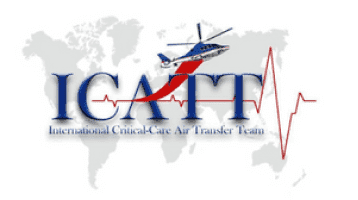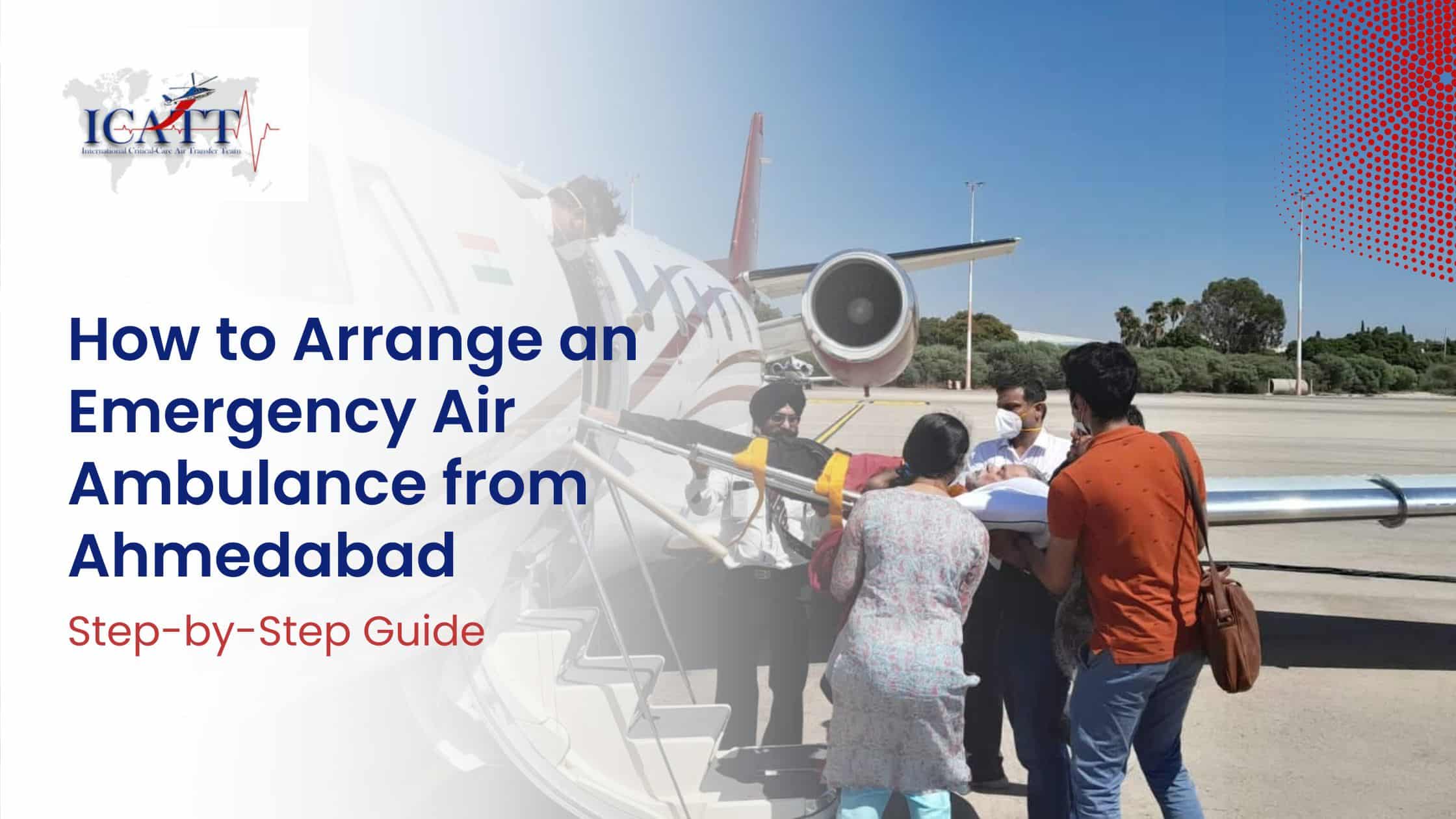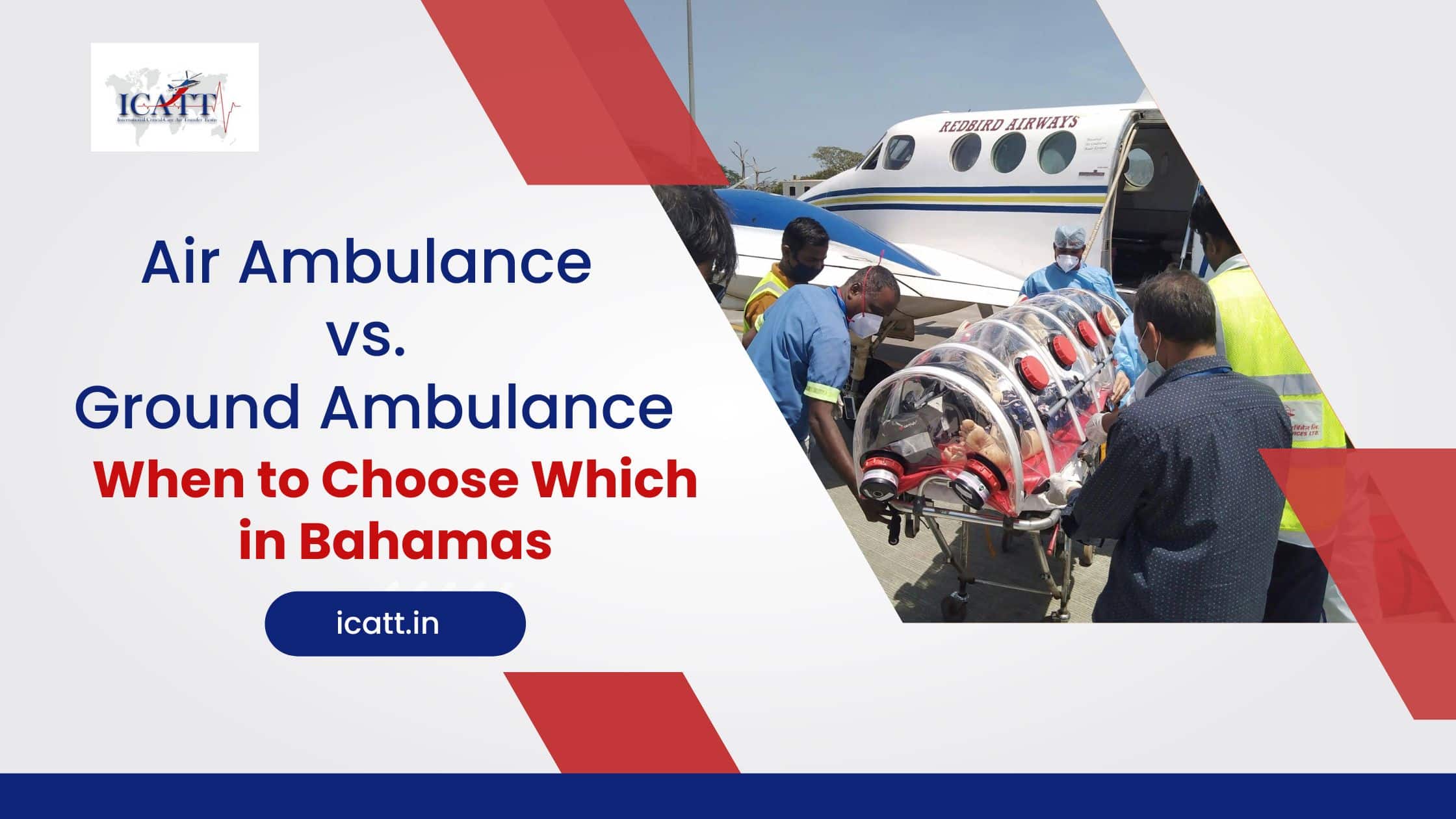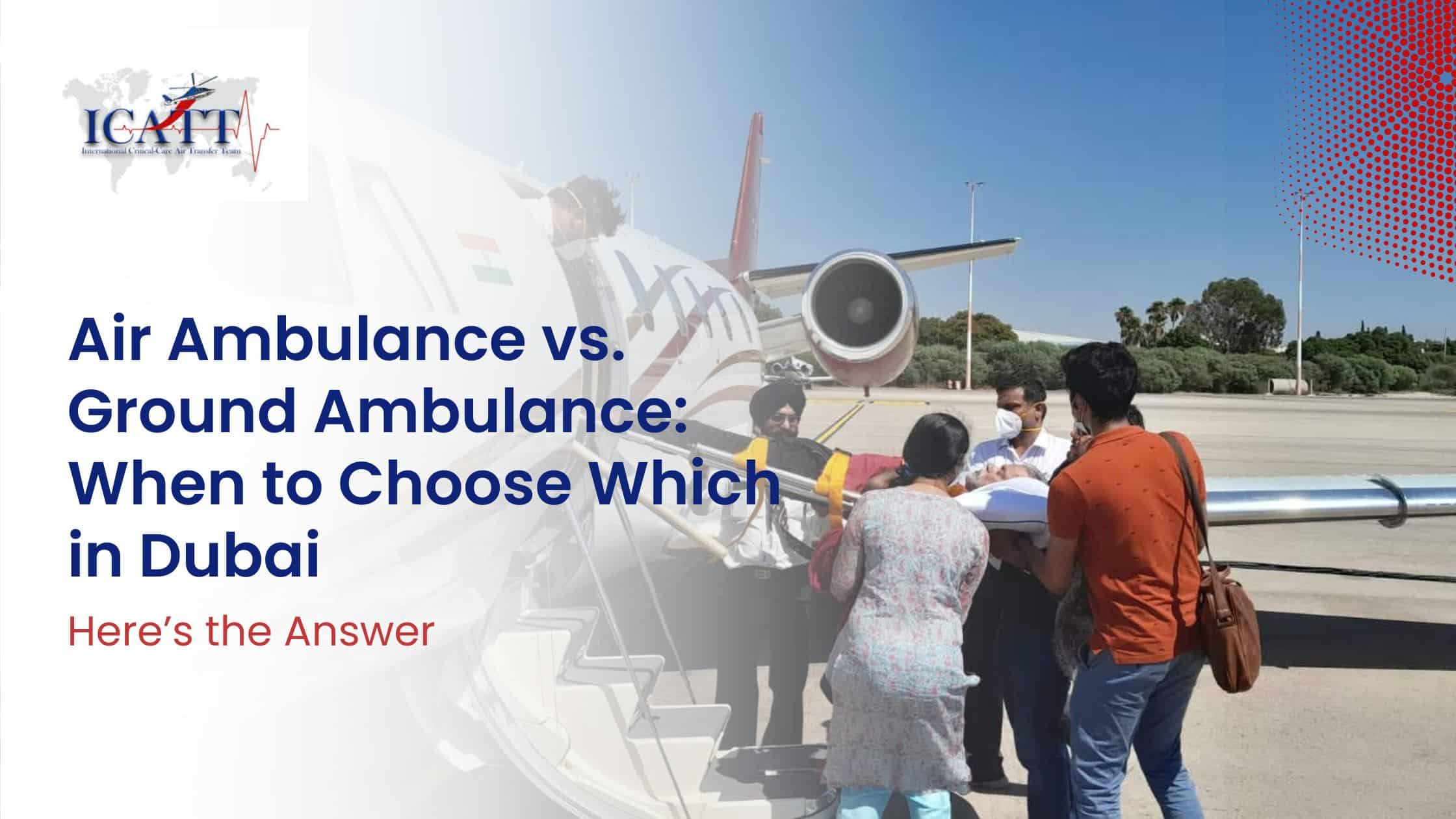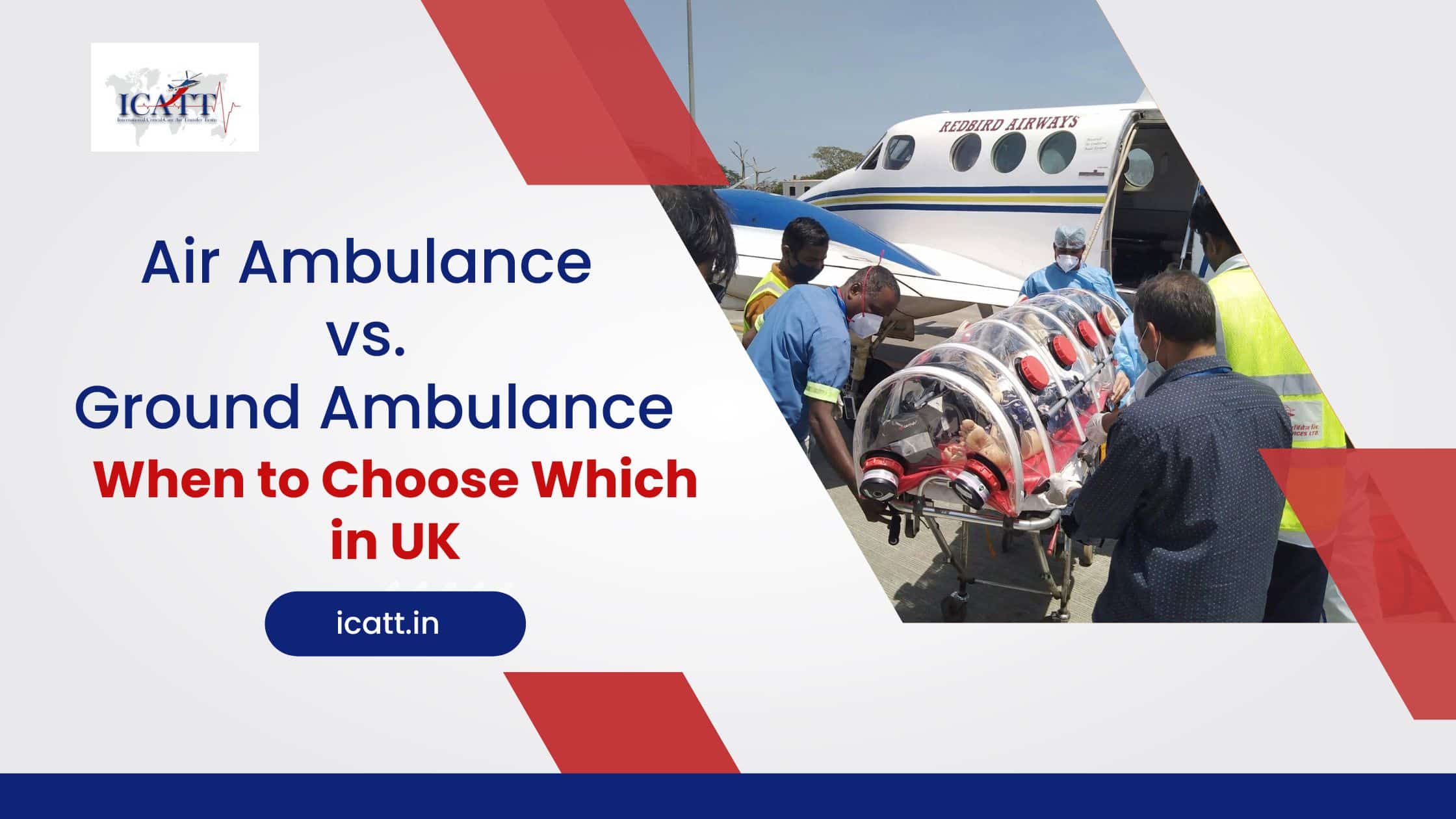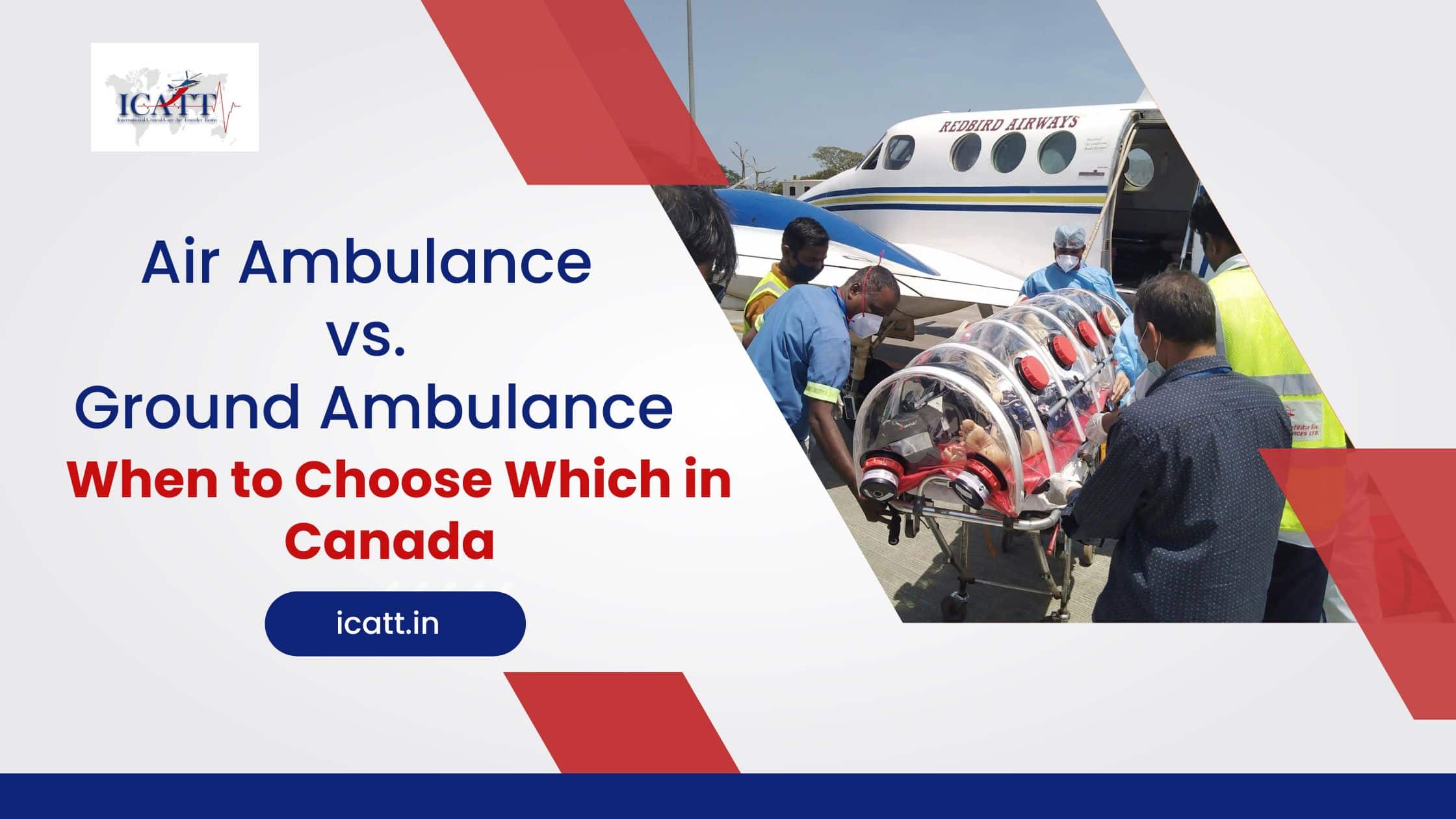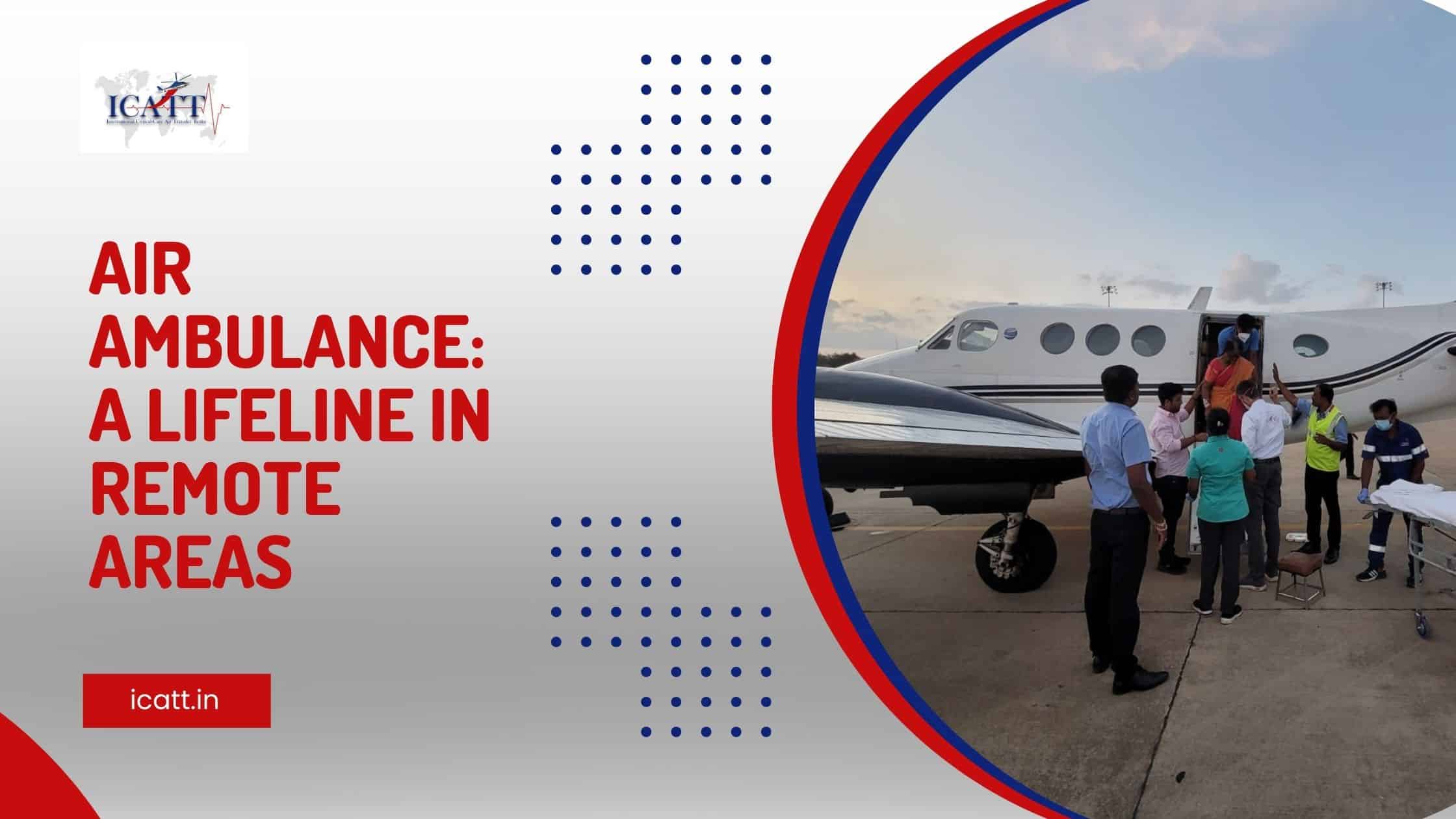Germany is well known for best medicines, research, excellent healthcare and world-class hospitals. But when an emergency happens, the big question becomes: how fast can help arrive at the right location? It all depends on how a patient is transferred. That is where we need to understand the difference between air and ground ambulance services in Germany, and especially when to choose air ambulance in Germany.
This is not just because transfer is required within the city, or from remote area to city area, but in a lot of cases international & national transfers are also required. So, whether you are moving within Germany or from Germany to your home country (or vice versa), the decision to select the mode of transfer has to be made with thorough knowledge as life of patient depends on this one decision.
Facts to Understand Germany’s Ground Emergency Transport System
Before we understand what, when and which transport system to use, first we need to have clarity about condition of ground ambulance services:
- As per ground EMS (Emergency Medical Services) there is a target response time of 12-15 minutes(legally) in many states. However, in German rural areas, mountain or terrain regions, and remote areas are often missed, and ground ambulances can’t reach on time.
- According to research available only 80% of alerts are met within the targeted minutes in Bavaria and rural declared areas. V4NA
These facts are clear pictures which show that ground ambulances are capable, but their structural limitations strung to it. It reflects that emergency transport in Germany struggle to reach on time in rural areas, remote regions and at the hour of emergencies.
Difference Between Air and Ground Ambulance Services in Germany
To make the right decision while opting for which one you can choose at the time of emergency, first understand the difference between the two:
| Factor | Ground Ambulance Germany | Air Ambulance Germany |
| Time of response at Scene | It usually is slower in rural or remote areas but works fine for nearby transit within city. | Usually reaches the rural/ remote areas within few minutes of call. Also, considered as the best option to cover long distances. |
| Transport Time to Specialty Care | Since it’s roadway it can get stuck in traffic, construction areas or other road delays like accident scenes. | These are direct transit options, no roadblocks, so travel faster to specialist hospitals (e.g. neurosurgery, cardio, transplant). |
| Medical Care Available Onboard | There is availability of standard emergency medical kits, which are handled by Paramedics, and physicians are rarely onboard except ICUs in hospital-ambulance combos. | The setup is customized as per the need of patient – like ICU-level setup, expert doctors monitoring patient, ventilators. |
| Accessibility or Area Coverage | Ground ambulances are quite widespread in cities but very limited to remote, mountainous, or island-like areas. | Air ambulances help bridge gaps and ICATT can reach remote zones, islands and even cross borders. |
| Weather Conditions | Usually gets stuck due to road closures, ice, snow, heavy rain or block ground vehicles in traffic areas. | Although air ambulances beat all the limitations as they fly in every condition. But it might be affected if there’s no expert pilots available. |
| Cost | Costs are generally lower and are covered largely by public health insurance, more routine. | The cost depends upon the distance and destination plus in-flight requirements. |
| Cross-Country Use | It is very complicated as not every destination can be covered by road and during emergencies it is not a good option. | ICATT specializes in repatriation; as the team handles permits and destination medical escort which makes smoother international flights |
| Infrastructure Need | The basic need is proper in city roads, highways, local EMS bases. | There is need for certified landing zones nearby to medical facility. |
| Best Fit / Ideal Use Cases | This is best for local emergencies, non-critical transfers, nearby hospitals. | Best fit for trauma emergencies, remote or hard to access cases, or when specialist care required during international transfer. |
When to Choose Air Ambulance in Germany
Here are some practical guidelines which can help you understand in what situations, choosing an air ambulance can make a big difference:
- When you are hours away from a specialist hospital and an emergency has taken place it’s always best to take help of air ambulance in Germany as road journey can make the situation worse. For example: you are hiking in mountain area or residing in a remote place away from city.
- Always call an air ambulance during severe emergencies like stroke, heart attack, polytrauma or something where golden hour matters.
- You need a hospital-to-hospital transfer for progressive treatment that is not available locally.
- When you need or want to be repatriated to your home/ origin country for comfort, and continuity of care during the tough times.
- When Road conditions, bad weather or traffic are blocking or delaying ground transport air ambulances play an important role there.
- When stability is the major factor and time-sensitive care is required for a newborn with incubators/ NICU.
How does ICATT Help with Air Ambulance Service?
Since you are now clear about air vs ground ambulances and are aware of the difference and requirements. It’s important to see where ICATT fits in and why people choose ICATT.
- Years of Experience: ICATT is not new to the business, but it has been here for years now and has handled several cases. For years now when patients in Germany need transfer abroad (or repatriation back home) ICATT has provided the best air ambulance service. We operate in almost every country and take emergency cases very seriously.
- Full Logistic Support: ICATT will ensure that all necessary paperwork, permissions for heliport or aircraft landing, hospital coordination (origin & destination), ground transport components, insurance, etc. are taken care of seamlessly. We ensure that neither patient nor family members must suffer any extra stress of transferring during the tough time.
- Medical Team Quality: Medical staff, paramedics, neonatal specialists (if required), and others are trained in handling emergencies while in transit. This is particularly important since time in the air is important, and every minute matters. Additionally, teams put every effort into ensuring the patient gets the best medical transit.
- Cost Transparency & Compassion: Though it is not as cheap as ground ambulances in Germany, but ICATT works with insurance and tells everything to the families about no hidden charges. We charge to ensure patient comfort, reaching on right time and remove any hassles.
- 24/7 Availability: At times the air ambulance network within Germany may restrict this transport to time of day, or area, but ICATT’s availability and readiness can help fill this gap.
Hence, we are aware that Germany’s healthcare is strong, the roads are in excellent condition, and ground EMS is reliable (majorly for daily emergencies). Yet, when minutes and every second matters emergency does not wait to get worse it just keeps happening. That’s when air ambulance Germany truly becomes a lifesaver. That is where air ambulance Germany really saves lives. Whether it is a remote location, a traumatic injury, or time is ticking, air medical rescue can mean the difference between survival and tragedy.
So, if you ever find yourself in a position to ask when to choose an air ambulance in Germany, remember time, distance, severity: that is what matters. Ground ambulances serve well in cities and non-urgent cases. But for stroke, heart attack, wilderness, or night emergencies, air should be your first and go to choice to avoid any casualties.
Understanding difference between air and ground ambulance services in Germany is not just an academic learning, but it can be the reason someone survives vs suffers.
